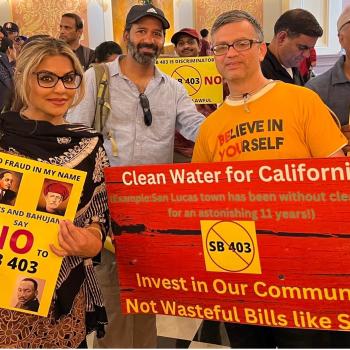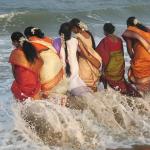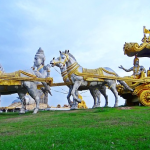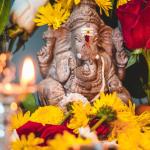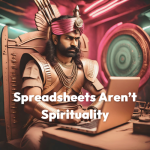All the books are available for downloads as pdfs, and are free. However, since it takes quite an effort to scan and create some of these ebooks, please consider making a small donation. You can enter the amount once you click on the books below.
Sanskrit version (PDF, 24 MB) by Vishnuchitta Alwar or Engalalvan, and edited by PB Annangaracharya. Published in 1922 at Kanchipuram. Title: Vishnu Purana
Hindi version (PDF 36 MB)
Telugu version (PDF, 19MB) by K. Bhavanarayana, published in 1930. Title: Vishnu Puranamu
Bengali version (PDF, 15MB) by Kaliprasanna Vidyaratna, published in 1926 by Shri Sitanath Ray and Sons.
English version Part 1 (PDF, 19MB) and Part 2 (PDF, 19MB) by Horace Hayman Wilson Trubner, published in 1870. Title: The Vishnu Purana: A System of Hindu Mythology and Tradition
A print version of the Vishnu Purana is available in India from Flipkart, and from Amazon in the US.
Be sure to check out the public domain books page for more puranas, epics and other interesting books to download.
More Free Stuff
 Vairagya is a collection of sacred chants that include Nirvana Shatakam, Aum Namah Shivaya and Guru Paduka Stotram.
Vairagya is a collection of sacred chants that include Nirvana Shatakam, Aum Namah Shivaya and Guru Paduka Stotram.
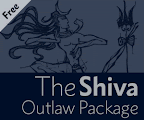 “Shiva – Ultimate Outlaw” is in the words of yogi and mystic Sadhguru, and gives us a dynamic and unique look at the many aspects of Lord Shiva, that are not found elsewhere.
“Shiva – Ultimate Outlaw” is in the words of yogi and mystic Sadhguru, and gives us a dynamic and unique look at the many aspects of Lord Shiva, that are not found elsewhere.
 The Lord Shiva app is a one-stop guide to Lord Shiva. Get chants, stories, temples, wallpapers and more.
The Lord Shiva app is a one-stop guide to Lord Shiva. Get chants, stories, temples, wallpapers and more.
Download Android App
The Puranas
The Vishnu Puran is the purana dedicated to Lord Vishnu, who functions as the preserver of the universe in the Hindu way of life. Several editions of the Vishnu Puran are available in the public domain in the PDF format for download in English, Hindi, Sanskrit, Telugu and Bengali. Keep reading for an explanation of the role the Puranas play, and a brief history of the Puranas.
A Purana is a particular aspect of Hindu scriptural literature, which covers several topics such as history – political and otherwise – philosophy, sociological aspects and several other subjects. Essentially, it can be seen as a great bank of knowledge about esoteric subjects, as well as a historical document (with several distortions sometimes!) of India’s past.
The Puranas are of two kinds: the Mahapuranas and the Upapuranas. Each class consists of eighteen puranas, bringing the total number of puranas to thirty-six. The Mahapuranas or “Great Puranas” are the more important ones, while the Upapuranas or “sub-puranas” are the minor ones are often neglected in study.
The Vishnu Puran
The Vishnu Puran as we have it today, is said to be a mere fraction of what was originally revealed to the sages. For example, the sage Lomaharshana, who is supposed to have had six disciples. Three of these disciples composed one Samhita each, where a Samhita is a collection of lore and scriptural knowledge. Lomaharshana is said to have compiled a fourth samhita. Of these four, only one Samhita is supposed to have survived, which was collected together to form the Vishnu Puran.
The Vishnu Purana in its current form is recited by sage Parasara, and begins with a description of events beginning from Vishnu’s Varaha avatar. The purana consists of six chapters, the first of which is focused on the description of the creation of this existence. The purana details how creation is born and dies, in repetitive manner, at the end of one lifetime of the god Brahma, which is itself equivalent to one day of Vishnu.
Book 2 continues from the first one and lists out the many kings of each Manvantara, a section of time equal to many millennia. Among these kings, the most important is perhaps Bharata, from whose name India gets its original name: Bharata varsha. The purana describes the geographical features of the world, centered around the axis mundi – Mount Meru. Seven circular continents are surrounded by seven oceans to the end of the world. The names givento many lands are hard to verify or relate to present day features. However, the features described within Bharat varsha are much more easy to pinpoint and relate to modern day names. In many cases, the same names have been retained to the present day.
The third book mainly deals with other texts in Hindu scriptural literature, such as the Vedas and the Upanishads, along with an exploration of teh Hindu social and religious system. The fourth book is a sort of genealogy, containing a bare listing of historical events (sometimes dramatized excessively) and a list of kings and dynasties.
The fifth book deals with the life of Krishna, the divine incarnate in the Mahabharata. The final book, rather appropriately, deals with the destruction of the world and how it will take place!





